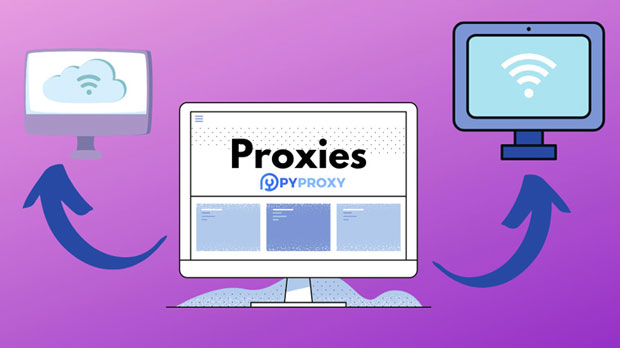When it comes to evaluating the cost-effectiveness of static residential proxies, it is crucial to consider the underlying factors that contribute to the price. PYPROXY, a well-known provider, offers a range of static residential proxy services. These proxies are particularly valuable for their anonymity and reliability, which makes them ideal for tasks like web scraping, account management, and data collection. However, the question remains: is the price for these static residential proxies in PyProxy's review reasonable? To assess this, we will explore the factors that influence pricing, compare them with industry standards, and offer insights into how clients can evaluate the value of such services. This analysis will provide a clear understanding of whether PyProxy's static residential proxy pricing aligns with customer expectations and industry norms. Factors Influencing the Price of Static Residential ProxiesBefore diving into the specific pricing of PyProxy’s static residential proxies, it is essential to understand the factors that generally influence the price of such services. Static residential proxies are often considered premium solutions due to the following key elements:1. IP Quality and Rarity Static residential proxies are sourced from real residential IP addresses, making them less detectable compared to data center proxies. The rarity of these proxies, especially when sourced from specific regions, often drives up the price. In comparison to dynamic residential proxies, static ones are more stable, providing long-term usability for businesses, which further adds to their value.2. Geographical Location Proxies sourced from specific countries or regions, especially those with limited availability, tend to be more expensive. This is because demand for proxies in certain markets (e.g., the US, EU, or Asia) often outstrips supply, creating a natural price increase. Customers requiring proxies in multiple countries or with specific geographic requirements will face higher costs.3. Bandwidth and Speed The speed and bandwidth offered by static residential proxies play a significant role in their pricing. Proxies that provide faster speeds and higher data transfer limits are naturally priced higher due to their enhanced performance. Businesses that rely on large-scale data scraping or need high throughput for their operations will often opt for higher-tier proxies.4. Customer Support and Service Quality The level of customer support provided by the proxy service is another critical factor influencing pricing. Premium services often come with dedicated support teams, rapid response times, and additional features such as user-friendly dashboards or custom API integrations. This high-touch support ensures that clients can use the proxies effectively, which justifies the higher cost.Comparing Static Residential Proxy Prices with Industry StandardsTo determine whether PyProxy’s static residential proxy pricing is reasonable, it is necessary to compare it with industry standards. The price for static residential proxies can vary significantly across different providers. On average, prices for static residential proxies tend to range from $15 to $100 per month for a small-scale plan, with larger plans potentially costing several hundred dollars per month. Several well-established proxy service providers charge around $25 to $50 per month for entry-level static residential proxies with limited bandwidth and a set number of IP addresses. Higher-tier plans that offer greater bandwidth, faster speeds, and more extensive geographical coverage can range from $100 to $500 per month or more.In comparison, if PyProxy’s pricing falls within or slightly above this range, it could be considered competitive, especially if the service delivers high-quality proxies with superior performance and exceptional customer support. However, if the pricing is significantly higher without offering additional value or advanced features, it may not be considered reasonable.Benefits of Static Residential Proxies and Their Value to ClientsThe value of static residential proxies is multifaceted, and understanding these benefits is crucial for evaluating their pricing. Here are some key benefits that justify the cost of static residential proxies:1. Enhanced Anonymity Static residential proxies provide a high level of anonymity by routing traffic through real residential IP addresses. This makes it more difficult for websites to detect and block these proxies, which is essential for tasks like web scraping, bypassing geo-restrictions, and managing multiple accounts. This anonymity is a significant factor that clients are willing to pay a premium for.2. Reduced Detection Rates Unlike data center proxies, which are easily identifiable and can be flagged by websites, static residential proxies are harder to detect. Their stability and consistent IP addresses provide a significant advantage for tasks that require long-term access, such as market research, SEO monitoring, or ad verification. Clients who need to operate without interruptions will find this stability to be invaluable.3. High Success Rate for Web Scraping Static residential proxies are widely used for web scraping, where maintaining a high success rate is essential. With static IP addresses, clients can avoid getting blocked or rate-limited by websites, allowing them to extract large volumes of data efficiently. This high success rate can significantly improve the ROI of data collection efforts, making the higher cost of these proxies more justifiable.4. Geographical Diversity Static residential proxies allow businesses to target specific geographical locations. This is especially important for companies that need to access region-specific content or conduct localized market research. By offering proxies from various countries, these services provide clients with the flexibility to operate across different regions, further enhancing the value of the service.Should Clients Invest in PyProxy’s Static Residential Proxies?Given the factors mentioned above, clients should carefully assess the overall value provided by PyProxy’s static residential proxies before making a purchase decision. The decision to invest in these proxies depends on several considerations:1. Business Needs If a business requires reliable, high-quality proxies for large-scale web scraping, managing multiple accounts, or bypassing geo-restrictions, the investment in static residential proxies is often worthwhile. The premium price is justified by the benefits they provide, including enhanced anonymity, reliability, and the ability to maintain consistent operations.2. Budget Considerations It is essential for clients to assess their budget and determine whether the cost of static residential proxies fits within their financial plans. While the prices may be higher than other proxy types, the value they offer could make them a better long-term investment for businesses that need stable and secure proxy solutions.3. Service Features Clients should also consider the additional features provided by PyProxy, such as customer support, bandwidth options, and geographic targeting. If these features align with the client’s requirements and offer a competitive edge, the pricing may be deemed reasonable.Conclusion: Is the Price Justifiable?In conclusion, the price of PyProxy’s static residential proxies is likely reasonable if the service delivers on its promise of high-quality, reliable, and secure proxies that enhance anonymity and provide stability. The higher cost of static residential proxies is justified by their performance, customer support, and the numerous benefits they offer, particularly in scenarios that require anonymity, high success rates in web scraping, and geographical flexibility. Clients should evaluate their specific needs, budget, and the service features offered to determine whether the investment aligns with their business goals.
May 13, 2025



































































